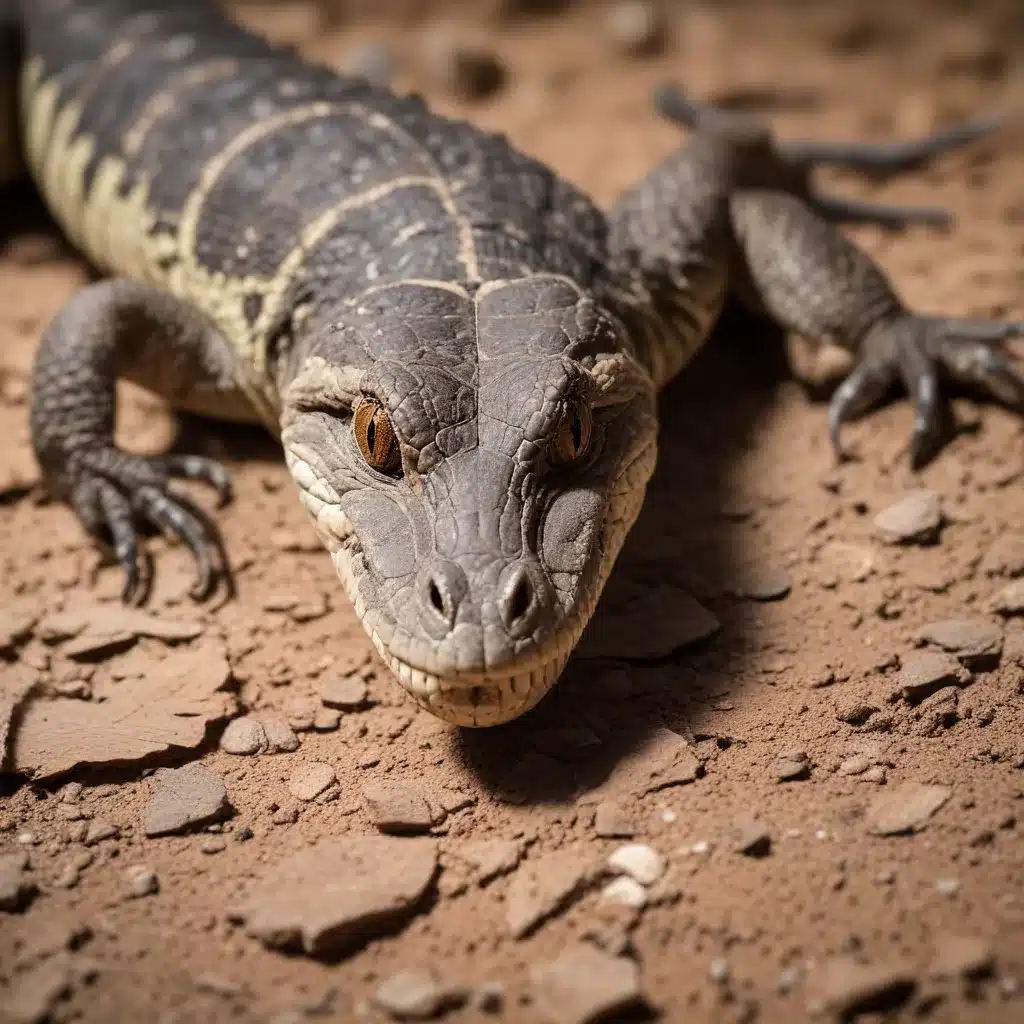
Understanding Venomous Reptiles: Safety First
Interacting with venomous reptiles requires absolute caution and adherence to best practices. While these creatures captivate enthusiasts, their potent venom can pose a serious threat if not handled properly. To ensure the safety of both owners and reptiles, it is crucial to be well-informed about the unique characteristics and handling protocols for venomous species.
One key consideration is the ability of some venomous snakes, such as the Mojave rattlesnake, to deliver a “dry bite” – a strike without the injection of venom. This can be particularly deceiving, as the victim may not immediately recognize the severity of the situation. Remaining calm and seeking immediate medical attention is paramount, as even a dry bite can lead to dangerous complications if left untreated.
Another important factor is the variability in venom potency, even within the same species. Younger snakes, for instance, may not have learned to control their venom delivery, potentially resulting in a more potent and dangerous bite. Recognizing these nuances can help owners make informed decisions about housing, handling, and emergency protocols for their venomous reptiles.
Reptile Care: Ensuring a Thriving Environment
Providing exceptional care for exotic reptiles is a multi-faceted endeavor that encompasses a deep understanding of species-specific requirements. From habitat setup and temperature regulation to dietary needs and preventative health measures, each element plays a crucial role in the overall well-being of these captivating creatures.
Habitat Setup and Maintenance
Replicating the natural environment is essential for the long-term health and happiness of exotic reptiles. This includes meticulously crafting enclosures that account for appropriate lighting, humidity, and substrate. Regular monitoring and adjustment of these parameters are necessary to maintain optimal conditions and prevent potential health issues.
Temperature Regulation
Reptiles are ectothermic, meaning they rely on external sources to regulate their body temperature. Providing a thermal gradient within the enclosure, with both warm and cool zones, allows the animal to thermoregulate naturally. Precise control of basking and ambient temperatures is crucial for supporting the reptile’s metabolic processes and overall well-being.
Dietary Considerations
Proper nutrition is a fundamental aspect of reptile care. Owners must research and provide a balanced diet tailored to the specific species, including the appropriate mix of proteins, vitamins, and minerals. Supplementation and feeding schedules may vary based on the reptile’s life stage, activity level, and environmental conditions.
Preventative Health Measures
Maintaining the overall health of exotic reptiles requires a proactive approach. Regular veterinary check-ups, parasite screening, and vaccination (where applicable) can help identify and address potential issues before they become serious. Additionally, owners should be vigilant in monitoring their reptiles for signs of illness or injury, and promptly seek professional medical attention when needed.
Breeding Exotic Reptiles: Strategies for Success
Responsible breeding of exotic reptiles is a complex and rewarding endeavor that demands a comprehensive understanding of species-specific behaviors, reproductive cycles, and genetic considerations. Successful breeders must navigate a range of factors to ensure the well-being of their animals and the viability of their breeding programs.
Reproductive Cycles and Breeding Triggers
Each reptile species has unique reproductive patterns and environmental cues that trigger breeding behaviors. Carefully observing and providing the appropriate seasonal changes in temperature, lighting, and humidity can help stimulate natural breeding processes, leading to successful mating and egg production.
Genetic Diversity and Selective Breeding
Maintaining genetic diversity is essential for the long-term sustainability of exotic reptile breeding programs. Breeders must carefully select breeding pairs to avoid inbreeding and the associated health complications. Incorporating new bloodlines and monitoring genetic traits can help strengthen the overall population and improve the quality of offspring.
Incubation and Hatching
The incubation and hatching stages are critical for the successful propagation of exotic reptiles. Precise control of temperature, humidity, and substrate conditions is necessary to support the development of viable offspring. Monitoring egg progress and employing appropriate hatching techniques can maximize hatch rates and ensure the well-being of the hatchlings.
Post-Hatching Care and Socialization
Once the hatchlings emerge, owners must provide specialized care and socialization to support their growth and development. This includes tailored housing, feeding regimes, and gradual exposure to human interaction to foster the animals’ confidence and comfort.
Legal Considerations for Exotic Reptile Ownership
Navigating the legal landscape surrounding exotic reptile ownership is crucial for responsible pet owners and breeders. Regulations can vary significantly depending on the species, location, and specific requirements set forth by local, state, and federal authorities.
Species-Specific Regulations
Certain reptile species, particularly venomous or endangered ones, may be subject to stricter regulations or even outright bans on ownership and trade. Thoroughly researching the legal status and permitting requirements for the desired reptile species is essential before acquiring or breeding these animals.
Licensing and Permits
In many jurisdictions, the possession and breeding of exotic reptiles may require specific licenses or permits. Owners and breeders must familiarize themselves with the applicable laws and ensure they have obtained the necessary documentation to comply with legal requirements.
Import and Export Considerations
The transportation of exotic reptiles across state or international borders can be subject to complex regulations and documentation. Owners and breeders must be aware of the relevant import and export guidelines, as well as any required health certificates or CITES (Convention on International Trade in Endangered Species of Wild Fauna and Flora) permits.
Ethical Considerations and Best Practices
Beyond legal requirements, responsible exotic reptile ownership and breeding should be guided by ethical principles that prioritize the well-being of the animals. This includes sourcing reptiles from reputable breeders, providing exceptional care, and ensuring the responsible placement or sale of offspring to promote the long-term health and sustainability of the reptile population.
By navigating the intricate world of exotic reptile care, breeding, and legal compliance, enthusiasts can cultivate thriving and diverse reptile populations while upholding the highest standards of animal welfare and environmental stewardship. Through a combination of technical expertise, ethical considerations, and regulatory awareness, the exotic reptile community can continue to captivate and inspire.
Explore our website to learn more about exceptional reptile care, breeding programs, and legal compliance guidelines.

